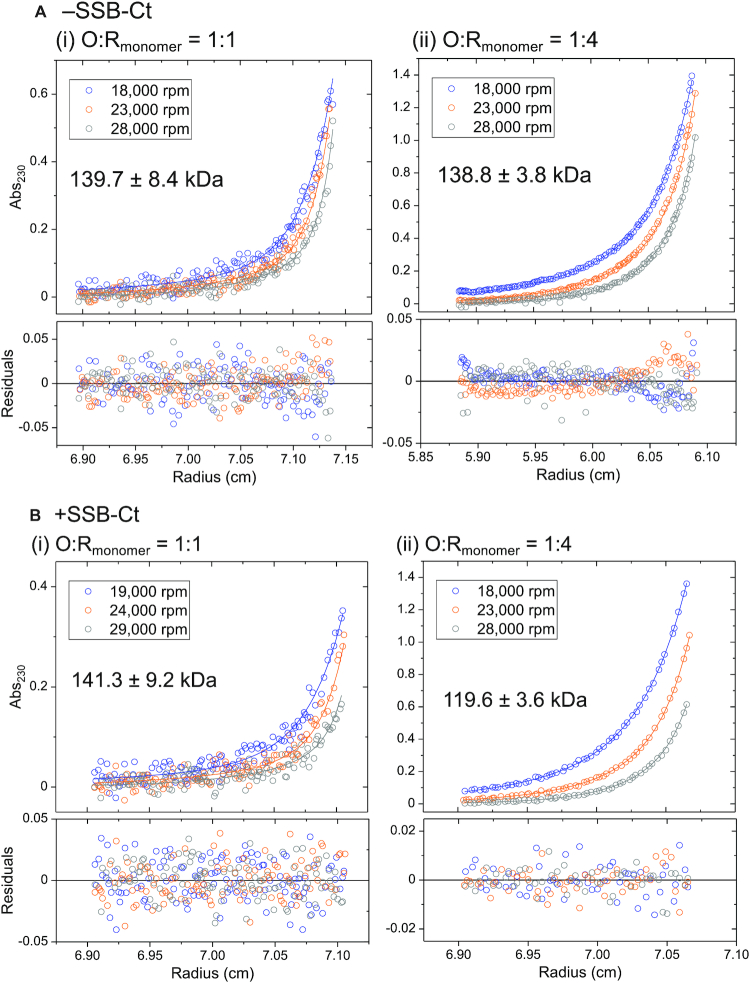Figure 5.
RecR tetramer can bind one or two molecules of RecO. (A) Results of sedimentation equilibrium experiments (monitored at 230 nm) with RecO (1.5 μM) and RecR at [RecO]:[RecR] molar ratios of 1:1 (1.5 μM RecR (monomer)) and 1:4 (6 μM RecR (monomer)) in buffer BTP (pH 8), 25°C at three rotor speeds (18 000 (blue), 23 000 (orange) and 28 000 (gray) rpm) are shown. (i) At 1:1 molar ratio, the data were described by two exponentials fit to a two species model (Equation (2)) with mass constraint where the MW of one species was fixed as that of free RecO (27.4 kDa) as observed by sedimentation velocity c(s) profile in (Figure 4A, red)). A global NLLS analysis of the data yields a MW of the second species as 139.7 ± 8.4 kDa, consistent with a RecR4O2 complex (expected MW of 142.6 kDa). (ii) At 1:4 molar ratio, the data were fit to the same model with the MW of one species fixed as that of free RecR dimer (43.9 kDa) as observed in Figure 4A (blue). A global NLLS analysis of the data yields a MW of the second species as 138.8 ± 3.8 kDa, also suggesting a RecR4O2 complex, indicating that the primary RecOR complex species is RecR4O2. The bottom panels show residuals from the fit. (B) Results of sedimentation equilibrium experiments (monitored at 230 nm) of RecO (1.5 μM) and RecR (1.5 μM, molar ratio 1:1) and RecR (6 μM, molar ratio 1:4) at three rotor speeds (19 000 (blue), 24 000 (orange) and 29 000 (gray) rpm) in the presence of P15 (9 μM). (i) At 1:1 molar ratio, the data were described by two exponentials and fit to a two species model with mass constraint (Equation (2)). The MW of one of the species was fixed as that of free RecO bound to P15 (29.1 kDa) as observed by sedimentation velocity c(s) profile in (Figure 4B, red)). The estimated MW of the second species is 141.3 ± 9.2 kDa, consistent with a RecR4O2 complex bound to two P15 molecules (expected MW of 146.0 kDa). (ii) At 1:4 molar ratio, the data were described by one exponential and fit to a one species model with mass constraint. The estimated MW of the second species is 119.6 ± 3.6 kDa, consistent with a RecR4O complex. This is in stark contrast to in the absence of P15 where the primarily observed RecOR complex species was RecR4O2.

